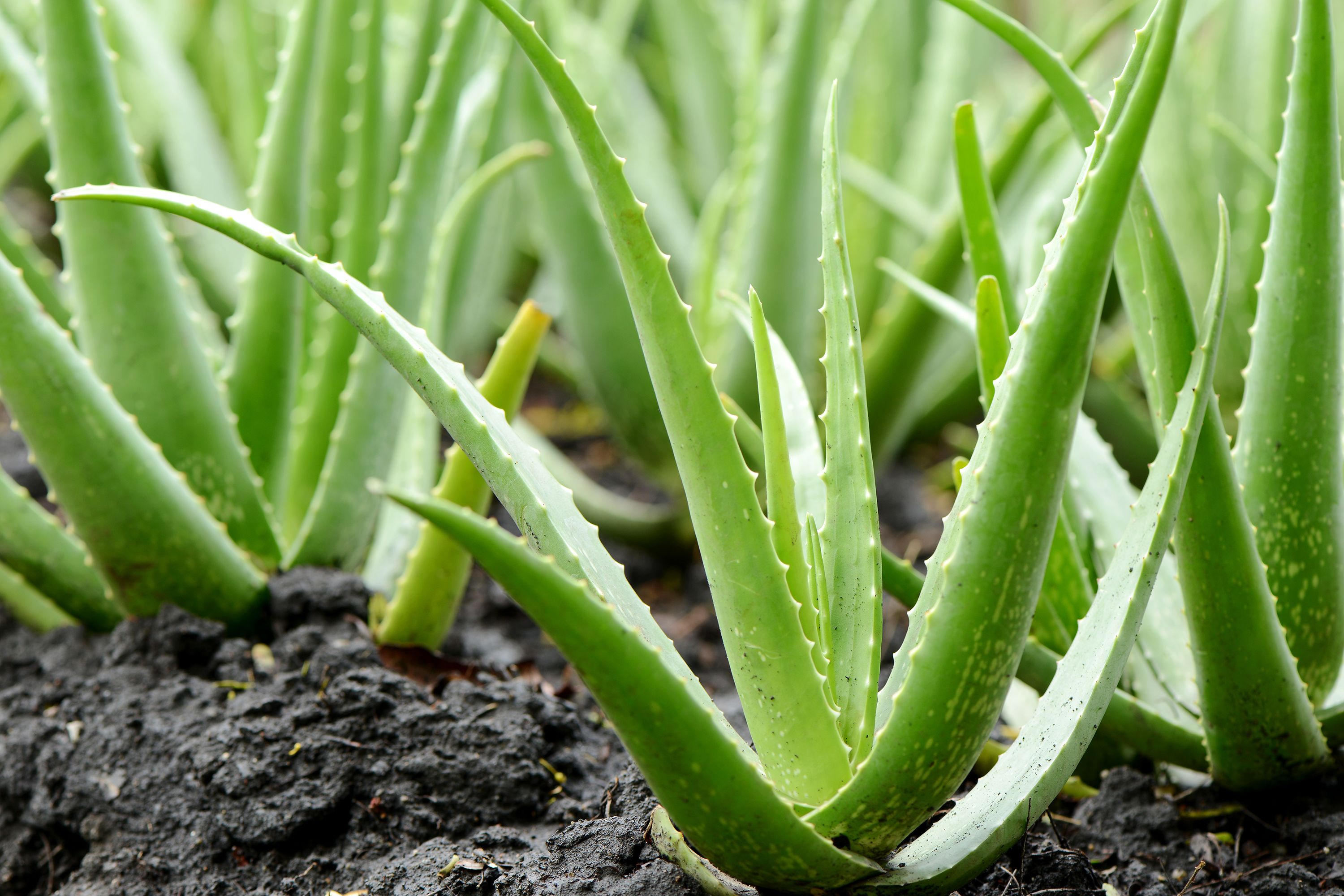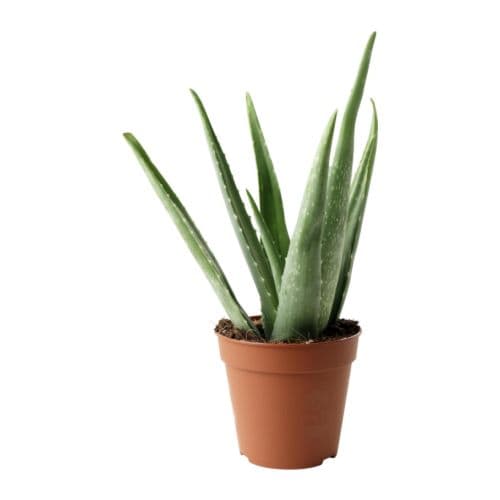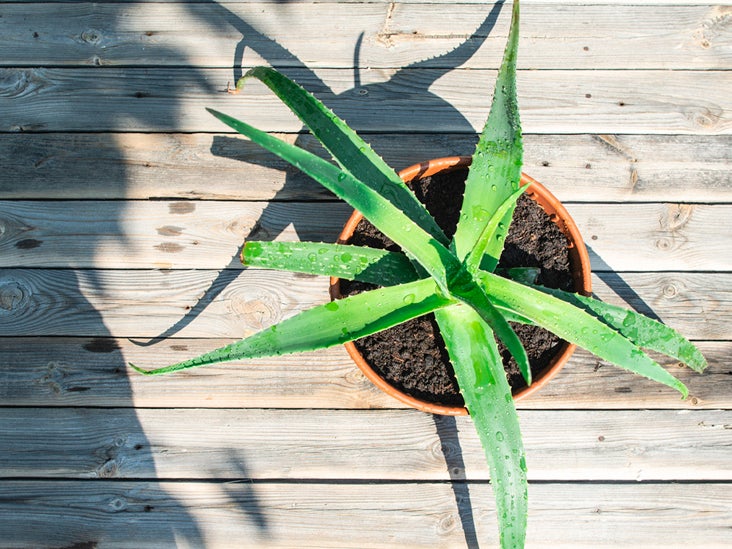We as gardeners should not neglect a leggy aloe vera plant because it might later produce more issues for our aloe plant, such as droopy leaves, heavy leaves, and leaves that grow downward or break from the middle. It describes the overall health of the plant and whether it may be experiencing legginess, which can harm an aloe plant. When we become aware of an issue with our aloe plant, we investigate potential solutions.
Table of Contents
Why is my aloe so leggy?
Low light, over watering, and bulk up foliage growth can all contribute to the legginess of our aloe plants. Aloe vera is a succulent, like many other plants, and when it doesn’t get enough light, it stretches and moves to a lighter spot with direct light, but as it does this, it doesn’t grow any stems or leaves, which means the plant can’t support the weight of the leaves and eventually becomes droopy or falls to the ground.
You must give the aloe plant enough direct light to alleviate its legginess because sunshine can strengthen the plant’s leaves, allowing it to stand upright.
A lengthy aloe stem results from this legginess, which causes the leaf to slide downward. The aloe can’t support the heavy leaf, so it drops off, causing the leaf to contact the soil and become moist. Pests can then easily infest aloe plant leaves, devour all the sap, and make the leaf soft and dry, which causes the leaf to become brown and die.
| Family | Asphodelaceae |
| Scientific Name | Aloe barbadensis miller |
| Native | Arabian Peninsula |
| Other Names | Cape aloe,Aloe plant, Chinese aloe, Barbados Aloe |
| Plant Type | Perennial, Succulent |
| Hardiness zone | 4a to 8b |
| Grown | Pots, Containers, Gardens, |
| Height | 24-40 inches(50-101cm) |
| Growth rate | Slower |
| Soil | Well draining, Fertile |
| Light Requirement | Partial Sunlight, Full Sun(Can Tolerate) |
| Fertilizer | Liquid based |
| USDA hardiness | Zone 8 – 11 |
| Blooming Season | Summer |
| Flower Color | Orange, Red, Yellow |
| Leaf Color | Green, Spiky Shape |
| Growth Rate | Slow growing |
| Benefits | For Skin and Body |
| Uses | Cosmetics, skin creams |
| Toxicity | Mild toxic |
How do I get my aloe plant to grow straight?
Aloe plants can grow straight up if we give them enough sunlight. Every day rotation on either side of the aloe plant will allow all the spiky leaves to receive adequate light, preventing legginess or sideways growth. Aloe plant legginess can also be treated by increasing the pot’s size by two inches. You must cut some leaves in order for the pot to sprout newer leaves because leggy aloe plants can be corrected by pruning and by giving them at least 2 hours of sunlight each day.
Another approach is to remove all the leggy leaves, including the ones that are dried, squishy, or watery, and replace the aloe plant in its pot with a healthy leaf. Yes, I do recommend making another container with aloe plants because this one might experience more issues. In order to save aloe plants, I have advised you to provide them a light source and prune them. However, occasionally an aloe plant will get leggy even after receiving sunshine. In this case, you can propagate the plant to grow a new aloe plant.
The easiest technique to save leggy aloe plants is to trim the leaves since we are immediately removing the troublesome leaves and allowing the healthy leaves to develop. Once more, let me emphasize that you should move the aloe plant to a spot where it receives sunlight.
How do I fix my leggy aloe plant?
There are several ways to correct the lanky aloe plant:
Providing Light Source
Low light levels are the most frequent cause of legginess in aloe plants. This occurs as a result of leaves stretching out their stems or leaves in an effort to find a light source. Yes, aloe plants can tolerate direct sunlight; however, if left in it for long periods of time, they can develop burns. In contrast, sunlight promotes the growth of strong aloe leaves and improves the plant’s general health. It also helps the plant grow more quickly.
If you have a window that gets sunlight for 2-4 hours a day, that’s a fantastic area to put the plant in order to address the low light condition in aloe plants that causes this legginess. The leaves that have already grown long and lanky can be pruned because there is no way to get rid of them naturally once your plant begins to receive sunshine.
Trimming
The sole remedy for leggy aloe plants is trimming because it only affects the sick leaf and leaves the remaining healthy leaves alone. It solves the underlying cause of the issue, making it an efficient solution for all indoor succulent or typical house plant leggy circumstances.
The greatest option for saving your plant without moving it or changing its pot is to prune the lanky growth. It can grow properly once the legginess is removed. But I strongly advise that if your aloe plant doesn’t get enough sunlight, it will grow leggy stems and leaves once more. Some people complain that their aloe plants have too long stems, but this is actually due to their lack of light, which causes the aloe to grow sideways and droop.
Pruning can cure this aloe vera legginess and restore happiness to your plant.
Natural Phenomenon
If you give your aloe plants ample sunlight, water, and a pot but they still grow leggy, it’s possible that some plants can go leggy naturally no matter where you put them. Therefore, the damaged, wet, and mushy aloe plant leaves should be removed, and the plant should then be allowed to regenerate.
Overwatered Plant
Aloe vera requires moist soil, and if you give it too much water, the plants may get lanky and their leaves may appear drooping, wet, or watery, and one or two leaves may even turn brown. The appearance of aloe vera plants can make it poor by causing the leaves to grow sideways. Even this excess moisture may attract pests that devour the sap juice and cause brown stains on the leaves or cause it to dry up.
Lowering the watering rate or limiting the schedule for watering the aloe vera helps cure legginess in overwatered aloe plants. Never water aloe vera if it’s humid or completely saturated; you may check by sticking your index finger into the ground to see if it’s dry. If the soil is dry, add additional water; if it’s wet, wait another two days.
Aloe plants do not require excessive irrigation in locations with adequate sunlight, but they do require more watering in areas with frequent shade, which results in moist soil or legginess.
Changing Pot
Aloe plants can occasionally become lanky due to being pot-bound, which puts pressure on the plant to droop its developing stem and alter its general growth pattern until it has enough room to spread. Aloe plant roots can move from one location to another, therefore if some of the leaves are growing sideways or looking droopy or lanky, a larger pot is required to address this problem.
By removing the entire plant, chopping off a few of the larger leaves, and pruning the thin roots of the aloe plant, you may also trim it to minimize the size of the aloe plant. The plant will grow normally if you replant it in the same container.
If I have the choice, I will cut the plant’s base and propagate it in a new pot, leaving the roots remain. By removing the bottom roots and let it to regenerate naturally, it can be repotted.
Aloe roots may initially require moist soil and additional water, but once they are established, they will start to produce leaves and grow once more. You now have two aloe vera plants.
How do you repot leggy aloe vera?
Repotting leggy aloe vera involves using a large pot, healthy, well-draining soil, and thorough care during the first several days. Pruning can salvage leggy Aloe Vera, and then you must repot the entire plant in a larger pot so that Aloe has room to spread out properly. The solution to the issue and how to grow two aloe vera plants from a single plant are covered below.
To repot leggy aloe vera, use these steps:
- Find the leggy or excessively long stem that is leaning sideways and cut it, along with any other leaves that appear limp or fall off downward, to address the aloe plant’s legginess.
- Now You may need to cut the aloe plant from the middle if you want to allow enough white space for both the plant and the roots when you cut the aloe plant down from the base. These two components consist of the roots and the above-ground shoot portion. While the top shoot portion of the aloe plant will be grown on the glass/jar of water for roots, the root will eventually grow the plant again. Once roots are visible, the plant can be put in soil.
- Pruning the lanky stems can address the issue if you don’t want two independent plants. You should give your aloe plant the appropriate amount of sunlight each year by keeping that in mind.
- As the aloe plant may now spread and grow in a larger pot without being leggy, changing the potting mix and replacing your pot with one of a larger size will help your plant with a long stem problem.
- Utilize a potting mixture suitable for succulents, such as aloe. Using Cactus and Succulents by Hoffman is something I advise. It has potential nutrients and is well-draining.
- Using a trowel, hand rake, and transplanter, gently remove your aloe plant from the old pot and place this soil in the new pot. These are the gardening tools, in case you don’t already have them. You might also need these.
- In order to let the plant recover from the trauma of being replanted, place it in the new container and give it water. Give it some time, put it in the shade, and the next day, move it to partial shade.
- Now that the lanky or long-stemmed aloe vera plant has been successfully repotted, you may enjoy watching it flourish once more.
What to do with aloe leaves that break off?
If an aloe vera leaf has already broken off, simply cut it off at the base and leave the plant to produce more new leaves. Use an aloe vera leaf that has been broken off to treat burns and other facial issues; otherwise, the leaf can become completely dried or turn dark and inky. A cut off leaf is useless because it will just absorb nutrients and not grow, which could worsen the insect issue with aloe vera. New growth can be observed emerging from the aloe vera plant’s base after the broken leaves have been removed.
Will an aloe leaf that is broken regrow?
The short answer is no, damaged aloe leaves cannot be grown. The plant must produce more of these leaves while allowing the older ones to wither away. And since it won’t produce any fruit or grow, cutting off the broken leaves is a fantastic option. It won’t regrow and will likely dry up, decay, and possibly turn brown or black.
How do you revive a dying aloe plant?
Once you know where to make a cut and how to propagate it correctly, propagation is a simple process. I’ll provide a video below so you can see how aloe plant propagation is accomplished.
Aloe vera leaves cannot be propagated by us; instead, you must cut from the base where the shoot is visible (middle white part of leaf and root section). If removed with leaves, this can start to grow roots. Even without leaves, this portion has roots in the soil below, so if you cut the entire plant off at the top and only keep the half-white branch, a new plant will sprout.
You can solve any issues with aloe vera plants if you are comfortable with cuttings.
How do you prune leggy aloe?
Pruners or other cutting tools can be used to trim a leggy aloe plant. Be sure to wipe the sharp blades after each use with rubbing alcohol to prevent spreading illness to your plant. Give the aloe plant some water and cut the sick stems and leaves close to the base; they will quickly recover. Remember to remember to remember to position the plant in direct sunshine where it gets at least 4 hours of light this time to remember to place the plant in shade first then move it to partial shade of course now it should have sunlight so it won’t have a legginess.
If feasible, prune your plant whenever you notice dried, watery, damaged, or sick stems since this is an efficient way to get rid of leggy aloe plants. Make certain they receive adequate amounts of water and sunlight.
With advantages for the skin and health, aloe vera is one of the most well-liked plants today. When cutting an aloe plant, you should save the sap juice from the leaves to use on acne, dry skin, and sunburns. These plants contain vitamins C and A as well as anti-inflammatory characteristics that are good for the human body, according to Baylor College of Medicine.
You can use the anti-wrinkle properties of aloe vera to prevent creases and wrinkles, but don’t expect your skin to miraculously seem younger after using it. Utilizing it will undoubtedly be beneficial, but I personally advise exercising because it can help to slow down the aging process. Unfortunately, this is a harsh reality of life and cannot be avoided.
How to apply aloe plant gel:
- Remove a leaf from the aloe vera plant.
- Slice the leaf till the clear gel is shown inside.
- Peel off every last bit of gel.
- When applied to the area of skin that is damaged, it will assist the skin retain moisture and heal quickly.
There are many items on the market that include aloe vera gel; if you don’t want to perform any cutting or peeling, just look at my list of suggested aloe vera products.
Buy organic aloe vera gel for the face and skin on Amazon
Why won’t my aloe plant stand up?
If your aloe plant has lanky growth or too much water causes root rot, it may be unable to stand upright and the stem may become floppy and bent downward. Reduce the amount of water the aloe plant consumes or give it enough sunlight so it never becomes leggy to solve the problem of the aloe plant not standing up (thin stem growth).
Legginess is the cause of the stem getting excessively long and not being able to stand up straight; it can be treated by trimming and moving the plant. As this issue may be significant and ultimately harm the plant, you should move the plant as well as trim it.
Although others might advise spreading it, that is also your final resort.
Aloe vera varieties
I’m only identifying the more well-known of the 400 or so species of aloe vera.
- Maculata Aloe
- Alocasia broomii
- A. F. rox
- The aloe plant
- Perry’s Aloe
- Nyeriensis aloe
- Succotrin Aloe
- such as Aloe Capitata
Aloe plant too tall
Simply prune your aloe plant to keep it from growing too tall because it may be reaching for a light source. It is okay to cut off the top half of the leaf and leave the plant to heal the pruning damage for a week. Aloe plants frequently have this problem, and it can be resolved by moving the plant from its current location. If it isn’t already occupied, try the south-facing window area or look for a location with lots of indirect sunlight that would be ideal for our aloe plant.
Due to the plant’s slow growth and tendency to become dormant in the winter, I would not advise cutting during that time. Also keep in mind not to overwater your aloe vera throughout the months of November and December. It was too chilly at that time, making it difficult for any plant to fully recuperate.
Aloe plant growing sideways
Low light causes aloe plants to grow sideways, and they roll over to face the direction of the light source when they find it. In sunshine, they typically grow in a circular pattern, and if they start to grow sideways, that’s okay until the angle decreases to 90 degrees. If the plant arrived with its leaves raised, it may have been looking for light.
And you shouldn’t worry too much because aloe vera grows in a narrow form growing sideways at an angle of 40 to 70 degrees with more developed foliage growth. Additionally, the cure is as simple as moving your aloe vera, and everything will return to normal.



